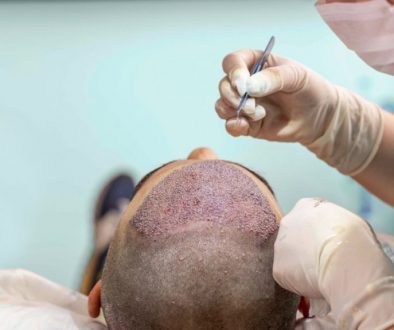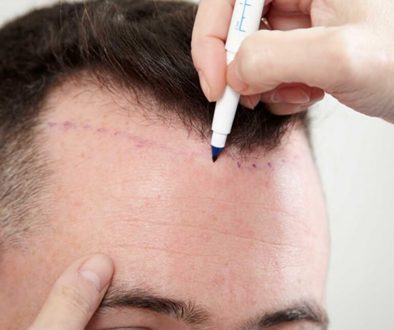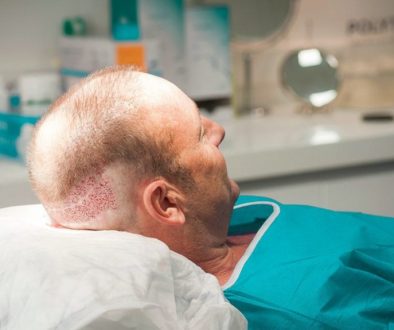Hair Transplant Trichophytic Closure – Does it Result in a Loss of Viable Grafts?
How many [tag]follicular unit grafts[/tag] on average are lost doing the [tag]trichophytic closure[/tag] [tag]hair transplant[/tag] donor closure technique?
This [tag]hair loss[/tag] question was answered by Dr. Cam Simmons of Toronto, Canada, who is one of our recommended hair restoration physicians.

The trichophytic part of the closure should not cause any loss of any grafts.
From the surface downward, the layers of the skin are the [tag]epidermis[/tag], the [tag]dermis[/tag], and the fat layer. We are only trimming off the epidermis or surface layer of the skin and the tips of the hairs. The trimmed hairs will keep growing.
We are not affecting the [tag]stem cells[/tag] in the hair follicle bulge area in the dermis layer or the [tag]dermal papilla[/tag] stem cells in the fat layer. The hair follicles will therefore be able to keep producing new hairs every 2 to 6 years for the rest of your life.
Avoiding tension is most important to keep donor scars narrow. First and foremost we have to avoid taking a wider strip than the scalp laxity allows. We can further reduce surface suture tension by using deep dissolving sutures or by undermining the skin edges.
Not doing a trichophytic closure allows me to make the donor strip 1 mm wider than if I do a trichophytic closure and that could yield another 250-300 grafts. Some patients prefer getting more grafts than having a trichophytic closure but most don’t.
We do a trichophytic closure almost all the time but avoid it if the skin edges do not come together easily before undermining or using deep sutures. I would rather create a narrow scar with no hair in it than a wide scar with hair growing through it. Of course, a narrow donor scar with hair growing through it is best of all.
On subsequent [tag]hair restoration[/tag] sessions, it may take a bit longer to dissect the [tag]follicular units[/tag] out from the old scar than from virgin skin but careful microscopic dissection can still preserve the grafts.
In summary, unless a patient prefers a non-trichophytic closure or their skin is tighter than I would like, we do trichophytic closures routinely.
Dr. Cam Simmons
—
Bill Seemiller
Associate Publisher/Editor




December 7, 2009 @ 6:48 am
In the past, the results were unnatural, costly and complicated. In the most recent 20 years, balding men have begun to enjoy the revolutionary advancements in the field of hair restoration. Dr. Meshkin has been at the forefront of these advances, pioneering the development of the innovative Nokor Microslit Grafting technique, which has been broadly described and accepted in authoritative medical journals and textbooks.
The technique was first introduced in 1989 and presented at the hair transplant seminars around the country. It was officially published at the journal of dermatology and oncology in 1994, the book or innovations and complications in cosmetic surgery in 1995, the hair transplant surgery text book by Dr. Dow Stough in 1996 and it was used as a reference at the hair transplant text book by Dr.Walt Unger in 2004. Dr. Meshkins’ technique offered physicians tremendous flexibility in the field of hair restoration surgery and contributed to the most recent microslit grafting technique.
Today’s’ new advance Ultra Refined Follicular Unit hair transplant allows for the ultimate in fullness and naturalness in one surgery mega session. We have all seen the plugy hair transplant of the past. But we don’t see today’s state of the art hair transplants because they go unnoticed. The transformation was from Plugs to micrografts to ultra refine grafts. Surgical hair restoration has dramatically evolved from big round “plug†grafts in the 60’s , minigrafts of 80’s to micrografts of 90 s and to modern hair transplant procedures using entirely follicular unit grafts.